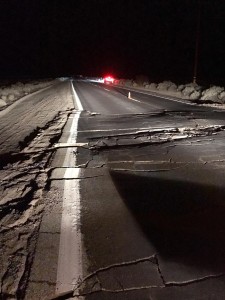The Race to Forecast Earthquakes

California State Route 178 SW of Trona, following the M7.1 earthquake. Road is now closed for repairs (USGS/Public domain).

California State Route 178 SW of Trona, following the M7.1 earthquake. Road is now closed for repairs (USGS/Public domain).